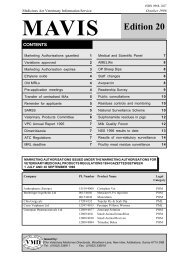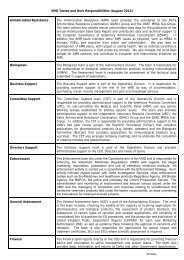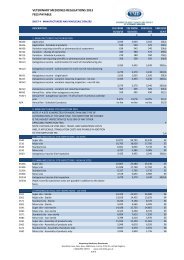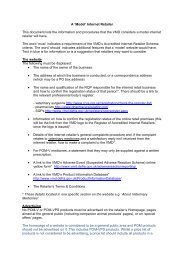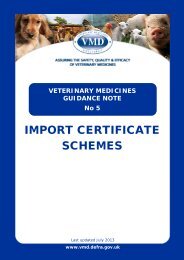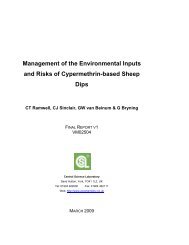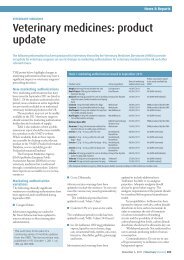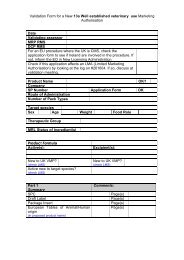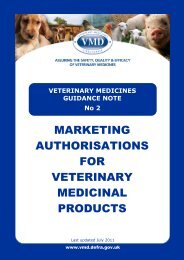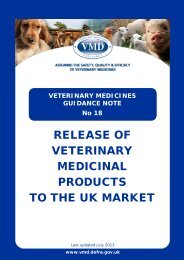Original draft PRP including a Scientific Annex - Veterinary ...
Original draft PRP including a Scientific Annex - Veterinary ...
Original draft PRP including a Scientific Annex - Veterinary ...
Create successful ePaper yourself
Turn your PDF publications into a flip-book with our unique Google optimized e-Paper software.
e) Operational InvestigationsReflecting concern about the occurrence and impacts of sheep dip inwatercourses, a number of operational investigations have been mounted inWelsh Region in recent years. These have focussed on:• emissions from sewage treatment works (STWs) receiving inputs fromlivestock markets or fellmongers/pelt processors and, more recently,• investigations of watercourses in rural areasSewage treatment worksIn 1997 and 1998, surveys of the discharges from 12 STWs found detectableconcentrations of sheep dip chemicals in 11 of them. In the following year thestudy was extended to 28 STWs (Welsh Sheep Dip Monitoring Programme:Sewage Treatment Works Report, 1999-2000). Sheep dip chemicals(diazinon, propetamphos and cypermethrin) were found in the final effluentfrom all but one ‘control’ works (a works that did not receive any fleece-relatedinputs). Although MAC exceedances in the final effluent were commonplace,none were found in the receiving waters downstream of the STW outfall.Nevertheless, detectable residues were again found in the watercoursedownstream of the STW outfall at 12 sites.Watercourse investigationsChemical monitoring was extended in 2000 in a joint programme between theEnvironment Agency Wales and Midlands Regions (Welsh Sheep DipMonitoring Programme, 2000 and 2001). Monthly sampling at 50 sites in 2000revealed detectable residues of OP and pyrethroid insecticides in 86% ofsites, rising to 92% of sites in 2001. EQS (MAC) exceedances were frequentand most of these were attributed to cypermethrin (28% of EQS exceedancesin 2000 and 20% in 2001). Improvements in the analytical limit of detection fordiazinon around this time led to MAC exceedances that might previously havegone unnoticed. In contrast, a relaxation of the MAC for cypermethrin (from0.001 to 0.002 ugl-1) meant that samples, which previously would have failedthe MAC for cypermethrin, were now reported as non-exceedances.



